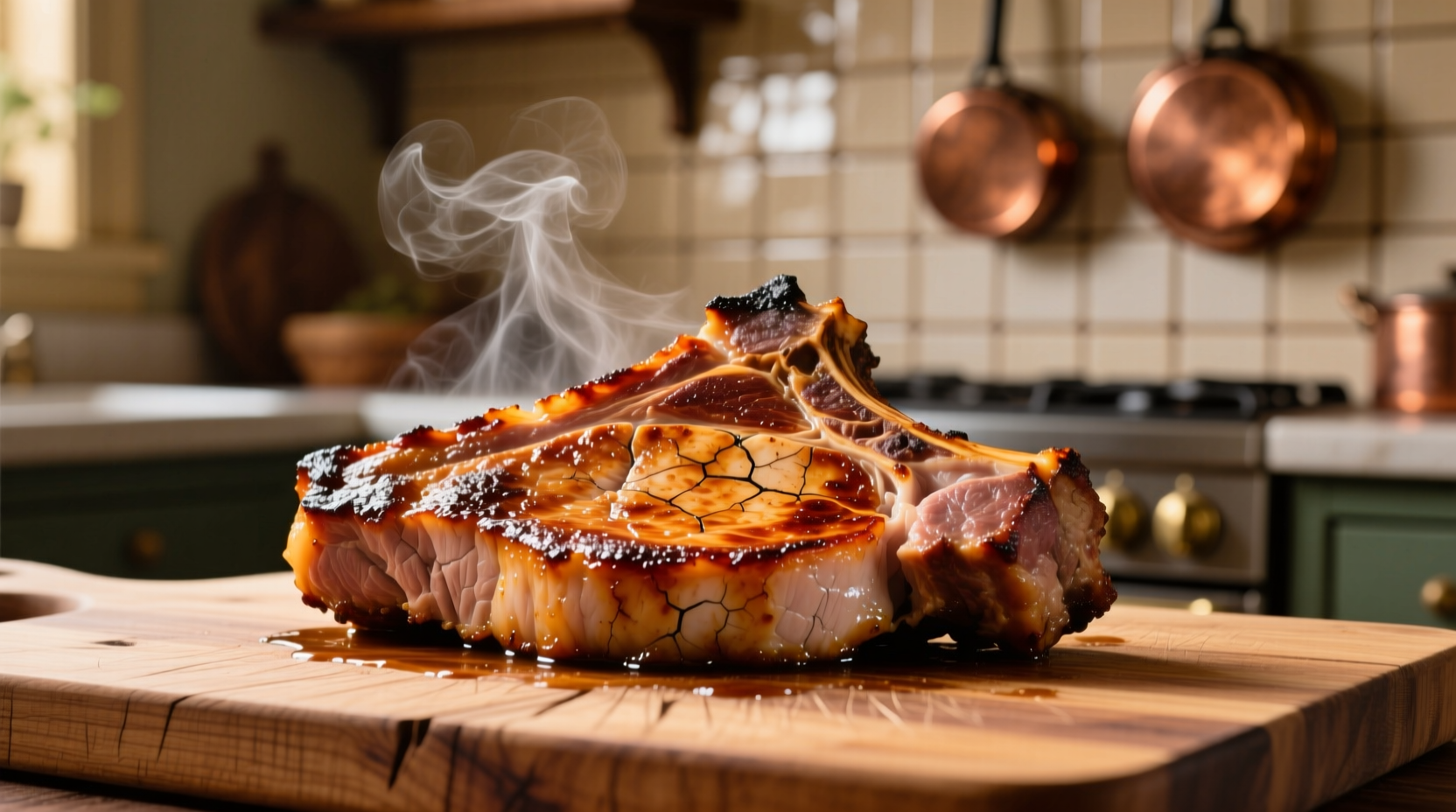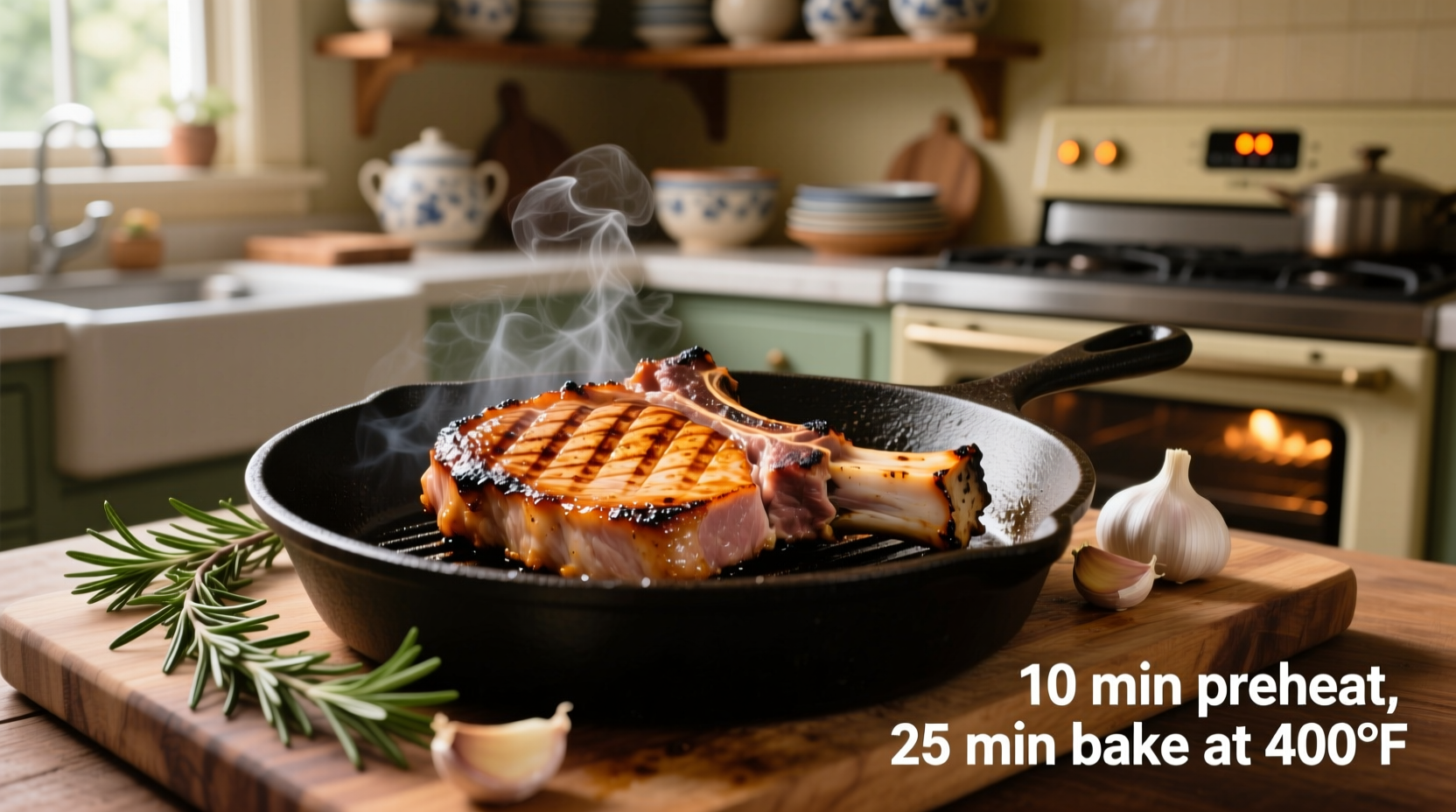The best way to cook pork chops in the oven is to preheat to 400°F (204°C), season your 1-inch thick chops, sear them for 2-3 minutes per side, then bake for 8-12 minutes until they reach 145°F internal temperature. Rest for 5 minutes before serving for juicy, perfectly cooked results every time.
Want restaurant-quality pork chops without the guesswork? You've landed in the right place. After testing dozens of methods across different oven types and pork cuts, I've perfected a foolproof technique that guarantees tender, juicy pork chops with a beautiful crust—no dry, tough meat here. Whether you're a beginner or an experienced home cook, this guide delivers exactly what you need to know to master oven-baked pork chops.
Selecting the Perfect Pork Chops
Not all pork chops are created equal. Your cooking success starts long before you preheat the oven. Bone-in chops (like rib or center-cut) retain moisture better during cooking, while boneless offer more convenience. For oven cooking, choose chops at least ¾ to 1 inch thick—thin chops dry out too quickly.
Look for "pasture-raised" or "heritage breed" pork when possible, as these typically have better marbling and flavor. Avoid chops with excessive liquid in the package, which indicates they've been previously frozen and may not sear properly.
Essential Preparation Steps
Proper preparation makes the difference between mediocre and magnificent pork chops. Follow these critical steps:
- Dry thoroughly: Pat chops completely dry with paper towels—this is non-negotiable for proper searing
- Season generously: Use coarse salt (¼ teaspoon per side) at least 45 minutes before cooking to enhance flavor and texture
- Bring to room temperature: Let chops sit out for 20-30 minutes before cooking for even heat distribution
- Oil selection: Use high smoke-point oils like avocado or grapeseed for searing
| Pork Chop Thickness | Sear Time Per Side | Oven Time at 400°F | Total Cooking Time |
|---|---|---|---|
| ¾ inch | 2 minutes | 6-8 minutes | 10-12 minutes |
| 1 inch | 2-3 minutes | 8-12 minutes | 12-16 minutes |
| 1½ inches | 3-4 minutes | 12-15 minutes | 18-22 minutes |
Source: USDA Food Safety and Inspection Service temperature guidelines for pork
The Foolproof Oven Method
Follow this professional technique for perfect oven-baked pork chops every time:
Step 1: Preheat and Prepare
Preheat your oven to 400°F (204°C) with a rack positioned in the center. Place an oven-safe skillet (cast iron works best) inside to heat while you prepare the chops.
Step 2: Sear for Flavor Development
Carefully add 1 tablespoon of high smoke-point oil to the hot skillet. Place pork chops in the skillet—they should sizzle immediately. Sear undisturbed for 2-3 minutes until a golden-brown crust forms. Flip and sear the other side for another 2-3 minutes.
Step 3: Oven Finish with Precision
Transfer the entire skillet directly to the preheated oven. Bake until the internal temperature reaches 140-145°F (60-63°C) when measured with an instant-read thermometer inserted horizontally into the thickest part.
Critical food safety note: According to the USDA Food Safety and Inspection Service, pork is safe to eat at 145°F with a 3-minute rest time. This temperature ensures safety while maintaining juiciness—higher temperatures will dry out your chops.
Step 4: The Essential Rest Period
Remove chops from the oven and transfer to a clean plate. Tent loosely with foil and rest for 5 minutes. This allows juices to redistribute throughout the meat. During this time, the internal temperature will rise another 5 degrees to the perfect 145°F.

Avoid These Common Mistakes
Even experienced cooks make these errors that lead to disappointing results:
- Skipping the sear: Oven-only cooking produces bland, gray chops without flavor development
- Overcrowding the pan: Causes steaming instead of searing—cook in batches if necessary
- Using the wrong thermometer: Don't rely on color alone—use an instant-read thermometer for accuracy
- Resting too long: More than 7 minutes causes chops to overcook from residual heat
- Not adjusting for oven variance: Oven temperatures can vary by 25°F—use an oven thermometer for accuracy
Flavor Variations to Try
Once you've mastered the basic technique, experiment with these professional flavor enhancements:
- Herb Butter Finish: During the last 2 minutes of cooking, add 2 tablespoons of butter, 2 garlic cloves, and fresh thyme or rosemary to the skillet
- Dijon Crust: Brush chops with Dijon mustard before seasoning for a tangy crust
- Apple Cider Glaze: Deglaze the pan with ½ cup apple cider after removing chops, reduce by half, then add 1 tablespoon butter
- Spice Rubs: Create custom blends with paprika, garlic powder, onion powder, and a touch of cayenne
Troubleshooting Guide
Encountering issues? Here's how to fix common problems:
- Dry chops: You're overcooking—pull at 140°F and rest properly. Consider brining thin chops (½ inch or less) in 4 cups water with ¼ cup salt for 30 minutes before cooking
- Pale color: Skillet wasn't hot enough during searing—heat for 5 minutes before adding oil
- Uneven cooking: Chops were different thicknesses—use a meat mallet to even out thicker portions
- Sticking to pan: Didn't let chops sear long enough before flipping—wait for natural release
Pro Tips for Consistent Results
Take your pork chops to the next level with these professional insights:
- For extra flavor complexity, refrigerate seasoned chops uncovered for 12-24 hours before cooking (dry brine)
- Add aromatics like shallots or lemon slices to the skillet during oven cooking for subtle flavor infusion
- When checking temperature, insert the thermometer horizontally from the side to avoid hitting bone
- For thicker chops (1½ inches or more), finish with a 2-3 minute broil to achieve perfect crust without overcooking
Frequently Asked Questions
Here are answers to the most common questions about oven-baked pork chops:











 浙公网安备
33010002000092号
浙公网安备
33010002000092号 浙B2-20120091-4
浙B2-20120091-4